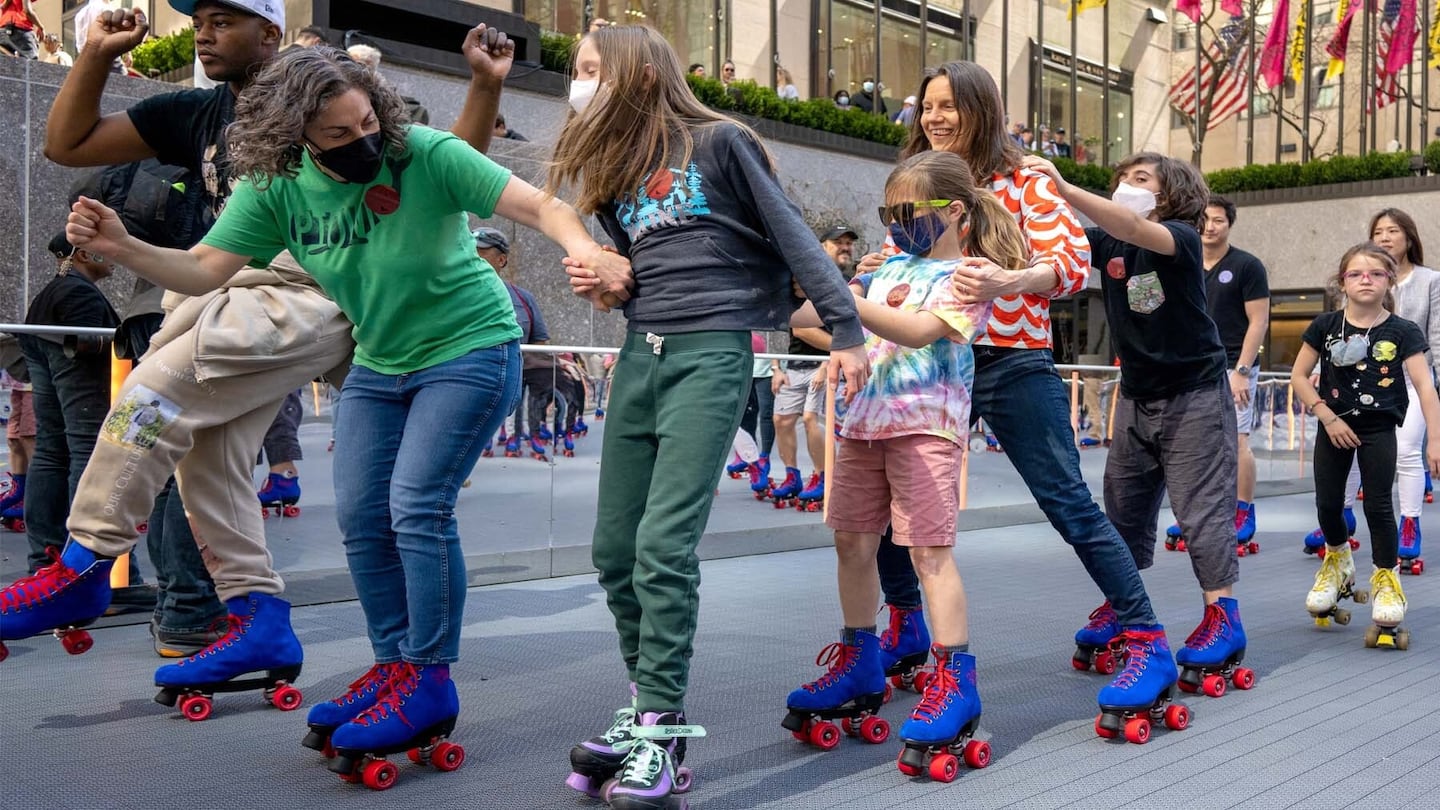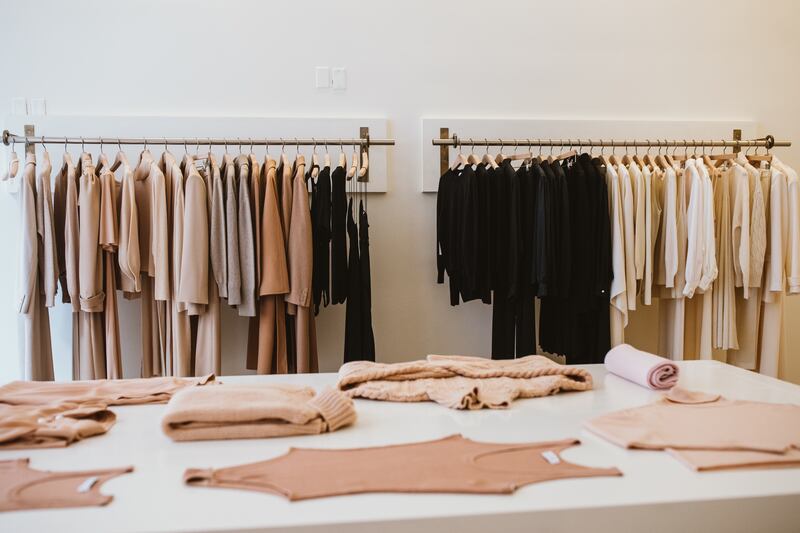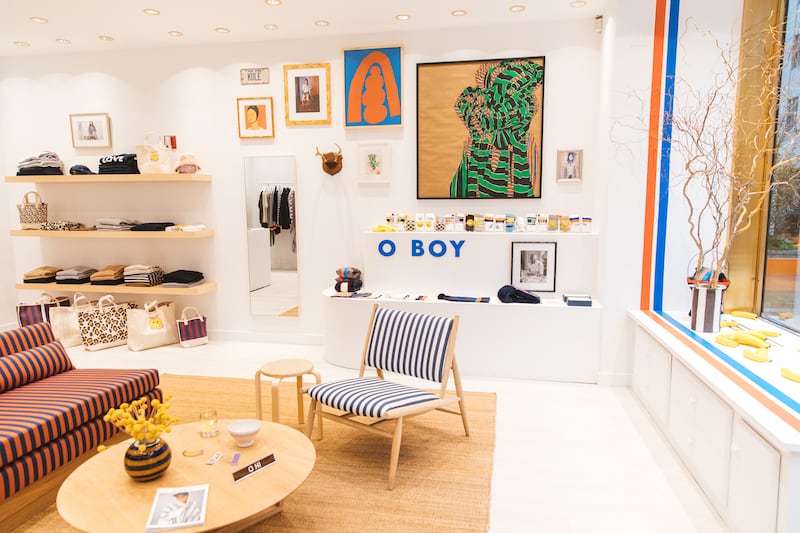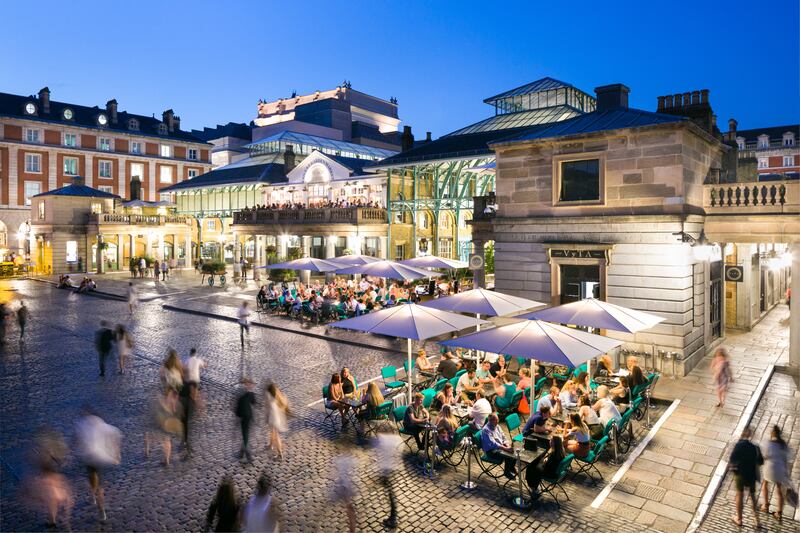
The Business of Fashion
Agenda-setting intelligence, analysis and advice for the global fashion community.

Agenda-setting intelligence, analysis and advice for the global fashion community.

The developers behind Rockefeller Center have a plan to shed the historic section of Midtown Manhattan’s reputation as a tourist trap: out with Ann Taylor, in with Lingua Franca.
For years, the stretch between 48th and 51st streets was best known as the spot to take photos in front of the giant Christmas tree and live out “Sex and the City” dreams by lining up for a Magnolia Bakery cupcake. On sunny weekday afternoons, office workers jostled with tourists for spots to pick over a salad on their lunch break. Until recently, clothing stores catered to this audience, with outposts from J.Crew, Banana Republic, Anthropologie, Michael Kors and Cole Haan.
Real estate developer Tishman Speyer, which owns much of the New York City neighbourhood, had been looking for ways to shed the neighbourhood’s tired image even before 2020, when both the office workers and the tourists disappeared overnight.
Now, a rapid redevelopment is underway. The area has welcomed a slew of restaurants from in-demand Michelin-starred chefs like Ignacio Mattos and husband-and-wife duo Junghyun “JP” and Ellia Park, and some smaller fashion labels have set up shop alongside the mega brands, including footwear label Armando Cabral, fine jewellery designer Eva Fehren and woven accessories line Bembien. Todd Snyder will open a two-floor store this summer, and Alo Yoga is coming this fall.
ADVERTISEMENT
The goal is to make Rockefeller Center a space for New Yorkers who aren’t there for work or at the insistence of relatives visiting from Ohio. It’s a problem confronting spaces from Boston’s Seaport District to Los Angeles’ Row DTLA and London’s Covent Garden that previously were geared toward visitors rather than locals. Developers also see new opportunities, including city dwellers playing local tourists — a trend that picked up during Covid, when travellers put their international trips on hold. The owners of nearby office buildings also hope hip restaurants and niche fashion labels will lure back white-collar workers.

“The North Star is to make this New York-centric,” said EB Kelly, managing director at Tishman Speyer. “We think if a place is a destination for [locals], it will also be a terrific destination for domestic and international visitors.”
The revamp is still in progress: foot traffic in the Rockefeller Plaza area in April is still down 40 percent from 2019, according to data from Placer.ai.
But on a recent spring morning, the corner of 49th street and Fifth Avenue was buzzing. A recently-opened roller skating rink was peppered with teens filming TikToks. Shoppers perused minimalist suiting looks from designer Ryan Roche and striped summer T-shirts from Kule that they had seen on Instagram. A group of diners piled out of the doors of Lodi, an all-day Italian cafe from Mattos, and made their way to Rough Trade, a vinyl record store that had moved from Brooklyn last summer.
All across the US, city retail areas are considering ways to bring in small upstarts, and are often looking to “popular home-town heroes because shoppers don’t want to see a store that’s rammed down their throats at a mall,” said Chris DeCrosta, co-founder principal of real estate firm GoodSpace.
Since developers are now keen to work with smaller fashion brands, they are more willing to work out deals on rent. Snyder said the Tishman Speyer team was more flexible “than any other landlord” about his new store’s lease terms.
Trading Mass for Niche
While Rockefeller Center still has its Banana Republic, niche fashion brands are important to making it and other neighbourhoods feel welcoming to tourists and locals alike. Where in recent decades the strategy was to offer well-known retailers and chain restaurants, now developers want to play host to a mix of brands that can’t be found anywhere else.
ADVERTISEMENT
“It has to feel … very strongly community-based, as opposed to the same thing you can get in every other city,” Jonathan Schley from real estate firm CBRE, who worked on several real estate deals in Rockefeller Center.
Kelly said her team has been looking for up-and-coming designers to make the shopping experience feel more distinctive. Tishman Speyer also hired Jenna Lyons, the former J.Crew creative director, to consult on the Rockefeller Center rebrand.

Amanda Kludt, publisher of Vox Media’s food site Eater, contrasted Rockefeller Center’s strategy to that of Hudson Yards, a major retail, office and residential development on New York’s west side that opened in 2019 with big brands such as Neiman Marcus and Zara as tenants.
“Hudson Yards was a missed opportunity because it felt like … someone just plopped a mall onto a parcel of land in New York,” said Kludt. “Rockefeller feels more creative. The curation is excellent and it’s attracting really fashionable young talent.”
Developers still see a role for mass brands. Michelle McGrath, executive director of Capital & Counties Properties, which manages Covent Garden, said city retail neighbourhoods are now looking for a healthy mix.
“You’ve got to get a balance of independent, homegrown and global,” she said.
Opportunities in Sight
For brands, signing onto newly developed retail neighbourhoods has opportunities as well as perils. Rents tend to be high and post-pandemic foot traffic can be unpredictable.
ADVERTISEMENT
Hali Borenstein, chief executive of Reformation, which will open a store in Covent Garden later this spring, said brands should be looking to places where “there’s a lot of new energy.”

Alo Yoga chose to open a smaller store at Rockefeller Center, without an accompanying yoga studio like its Soho location, said chief executive Danny Harris. He noted that while he’s optimistic about the return of foot traffic, the location is still a risk.
Increasingly, retail neighbourhoods are looking to focus on community, said Melissa Gonzalez, principal and chief executive of retail agency the Lionesque Group. Developers will want brands that can host parties and actually draw in crowds.
“The average store shouldn’t be thinking about how much product they can fit per square foot, they are thinking about experiential formats as consumers evolve,” said Gonzalez. “What newness will draw customers in and what will drive traffic back?”
Fashion brands are anticipating a surge in demand for wedding garb, and are responding in kind.
From seamless online-to-offline offerings to Metaverse-inspired installations, the standards of brick-and-mortar retail have evolved since the pandemic struck.
Banana Republic, J.Crew, Express and others are all promoting a new, more digital and fashion-forward identity in a bid to regain relevance. But a rebrand is no easy feat.
The company, under siege from Arkhouse Management Co. and Brigade Capital Management, doesn’t need the activists when it can be its own, writes Andrea Felsted.
As the German sportswear giant taps surging demand for its Samba and Gazelle sneakers, it’s also taking steps to spread its bets ahead of peak interest.
A profitable, multi-trillion dollar fashion industry populated with brands that generate minimal economic and environmental waste is within our reach, argues Lawrence Lenihan.
RFID technology has made self-checkout far more efficient than traditional scanning kiosks at retailers like Zara and Uniqlo, but the industry at large hesitates to fully embrace the innovation over concerns of theft and customer engagement.